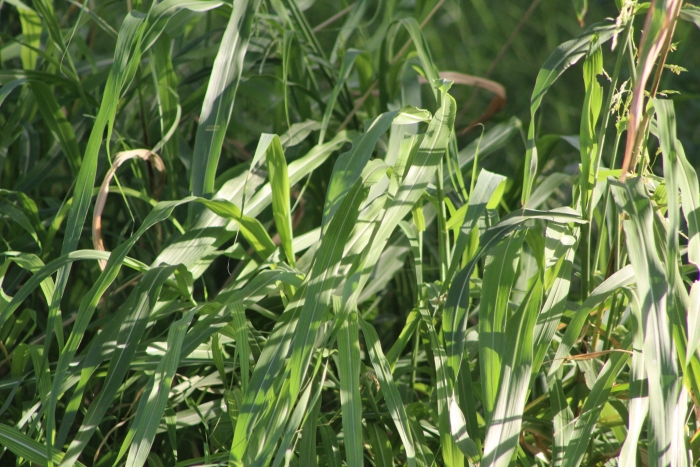Johnson Grass
(Sorghum halepense)
Johnson Grass (Sorghum halepense)
/
/

© Eliseo D Moreno
CC BY-SA 4.0
Image By:
© Eliseo D Moreno
Recorded By:
Copyright:
CC BY-SA 4.0
Copyright Notice:
Photo by: © Eliseo D Moreno | License Type: CC BY-SA 4.0 | License URL: http://creativecommons.org/licenses/by-sa/4.0/ | Uploader: heyitshelios | Publisher: iNaturalist |





















Estimated Native Range
Summary
Sorghum halepense, commonly known as Johnson grass, is a perennial grass that is native to Asia and Northern Africa. It is typically found in open grasslands, along roadsides, and in agricultural fields where it often becomes a problematic weed. Johnson grass can grow up to 7 feet (2 meters) tall, with broad, lance-shaped leaves and a robust, rhizomatous root system that allows it to spread rapidly and form dense stands.
Johnson grass is valued for its use as forage due to its rapid growth and high biomass production. It is also utilized for erosion control on disturbed soils. However, its aggressive growth habit and ability to spread quickly through both rhizomes and seeds make it a significant weed in crop fields, where it competes for resources and can reduce crop yields. In cultivation, it prefers full sun and can tolerate a range of soil types, although it thrives in moist, fertile soils. It is drought-tolerant once established and can become glyphosate-resistant, making it difficult to control chemically.CC BY-SA 4.0
Johnson grass is valued for its use as forage due to its rapid growth and high biomass production. It is also utilized for erosion control on disturbed soils. However, its aggressive growth habit and ability to spread quickly through both rhizomes and seeds make it a significant weed in crop fields, where it competes for resources and can reduce crop yields. In cultivation, it prefers full sun and can tolerate a range of soil types, although it thrives in moist, fertile soils. It is drought-tolerant once established and can become glyphosate-resistant, making it difficult to control chemically.CC BY-SA 4.0
Plant Description
- Plant Type: Grass
- Height: 2-11 feet
- Width: 2-6 feet
- Growth Rate: Moderate, Rapid
- Flower Color: N/A
- Flowering Season: Summer, Fall
- Leaf Retention: Deciduous
Growth Requirements
- Sun: Full Sun, Part Shade
- Water: Medium
- Drainage: Fast, Medium, Slow
Common Uses
Erosion Control
Other Names
Common Names: Johnson Grass, Egyptian Millet, Aleppo Milletgrass, Arabian-Millet, Cuba-Grass, Don Carlos, Evergreen Millet, Great Millet
Scientific Names: , Sorghum halepense, Andropogon anatherus, 1915, Andropogon arundinaceus, Andropogon avenaceus, Andropogon crupina, Andropogon decolorans, Andropogon dubitatus, Andropogon dubius, Andropogon halepense
GBIF Accepted Name: